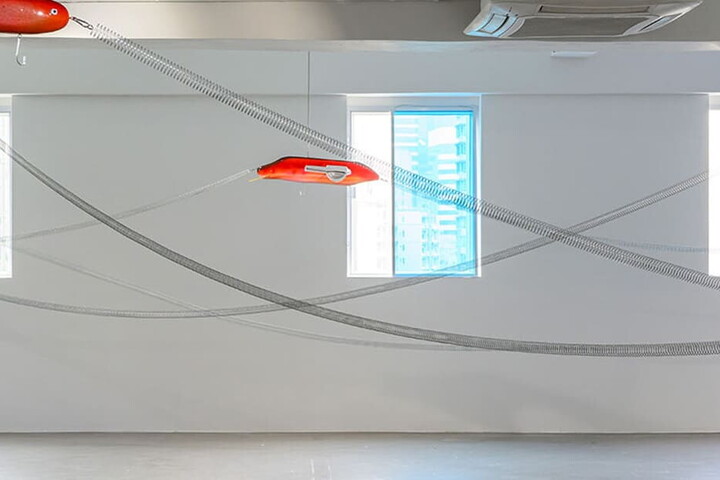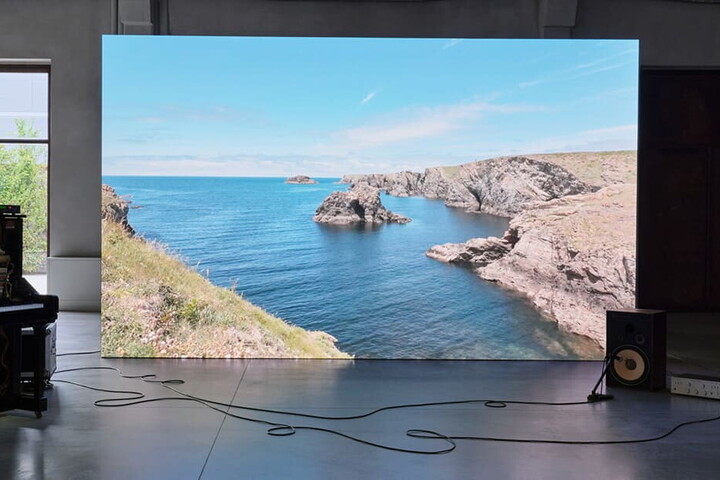The Italians, a people of saints, poets and navigators. And you could also add one of inventors, precursors and forerunners. Certainly, Italians are recognised as enjoying the ability to have imagination and passion which, when they are harnessed and converted into reality, become a factor of success.
If you want to go back to the origins, it seems obvious to quote a genius such as Leonardo da Vinci, a universal talent in whom the artistic aspect developed in equal measure alongside his engineering and scientific skills. What is evident is that, in every era, Italians have contributed to the forging of progress. And in some sectors, such as that of our travel across every surface (air, sea and ground), they invented and achieved a great deal.

This was almost always thanks to the invention of individuals, who were almost always treated with suspicion by conservative minds, where people only believe in the past. One of these individuals was certainly Corrado D'Ascanio, an engineer from the Abruzzo region to whom we owe the first helicopter prototype (1925), the first variable-pitch propeller (1930) and after the War the Vespa Piaggio, the first mass-transport motor vehicle in Italy and the most famous scooter in the world with 16 million models manufactured.
D'Ascanio, not surprisingly, was inspired by the experiments carried out half a century previously by Enrico Forlanini, the Milanese engineer with a fixation about flying travel machines: helicopters, airships and the revolutionary hydroplane, the forerunner at the beginning of the 20th Century of the famous seaplanes but which also led during the 1950s to the development of hydrofoils.
Sky and sea are two expanses of blue which touch each other. And if the Italians are above all navigators, even more so they are the creators of the most highly-demanded superyachts in the world and of fast - extremely fast - speedboats. But also of the extreme categories such as the Riva yachts, which were first introduced on the Iseo lake and went on to sail the seas throughout the world, from Miami to Sydney. Or they are simply incredible racers: Guido Abbate, the genius from near lake Como, amazed the international nautical engine world in 1952 by mounting on a boat the engine from the Alfa Romeo belonging to Juan Manuel Fangio. With that hybrid, the driver Mario Verga reached 226 km/h, an incredible speed for that era.
There are stories of men and shipyards: Luca Bassani, during the 1990s, led Wally Yachts to become the principal player in a revolution, initially in the sailing world, and later in avant-garde boat engines, made of carbon and glass using a design never seen beforehand.
And then there is the tarmac. The world of the road, where three sporting brands (Ferrari, Lamborghini, Maserati) remain icons throughout the world, thanks to mythical models which during the golden years were signed off by Italian designers such as Pininfarina or Bertone. But on the road is also where “generalist” manufacturers succeeded in creating cars for everyone, equipped with “democratic” technologies and the fruit of great vision: the 500, the Panda and the Punto for Fiat, the Aurelia and the Delta for Lancia, the Duetto and the Giulietta for Alfa Romeo.
There are also Italian inventions which have burst into car-making history: the thermal combustion engine (1853), the electrical system (1913), the monocoque chassis and front suspension with independent wheels (1923, Lancia Lambda), the automatic transmission (1931), the MPV (1956, Fiat Multipla), the retractable spoiler (1986, on the rear of the Thema 8.32), direct injection for a turbo diesel (1988, Fiat Croma), the common-rail (1997).
And in no lesser respect, Italy was a pioneer for the two-wheeler. In those advances made by the champions of the bicycle, you only have to think about the series of inventions by the genius Tullio Campagnolo – the most famous and the first modern gear-change (1935) – or about what the Bianchi and the Legnano bikes represented for cycling fans throughout the world.

Then there are those who hurtle around the circuits or along the roads: here too there is a history of ingenuity such as that of Carlo Guzzi – capable of inventing the first “elastic” frame for motorbikes in 1927 – for the brand of the same name. Or featuring incredible models such as the previously-mentioned Vespa and the Ape Piaggio or innovative technologies such as the "desmodromic "engine from Ducati, designed in 1958.
In this thrilling arena, a place in the sun is also reserved for Pirelli which ever since its beginnings has combined the concept of performance with the – extremely important – one of safety. Many of these innovations were developed in motorsport, a true open-air laboratory for Pirelli.
This is how it developed the Cinturato (1951), the first radial tyre to use a mixed textile/metal belt, a tyre destined for the first Formula 1 races but which then also became an icon on the roads.
The 1960s, though, saw the arrival of the Pirelli BS3, the tyre “with an overcoat”, with an interchangeable tread depending on the season of the year; an idea developed from rallying and rendered functional for everyday driving. From off-road competitions, you also saw the arrival of the Run Flat tyre, one of the anti-puncture technologies, together with Seal Inside.
It was Pirelli yet again that was the first to insert sensors into a tyre, which were able to have a dialogue with the car to which they were fitted, in order to provide useful information on their status and soon also on the road conditions. In the coming years they will also be able to communicate via 5G with other vehicles and road infrastructure in order to increase safety for every car driver.
Today, development is via sophisticated simulators and among recent innovations you can also point to the adaptive tread of the Cinturato All Season SF2 and the tread with mechanical intelligence of the Cinturato P7. These are products of ingenuity, but also of passion for cars and for those who drive them.




